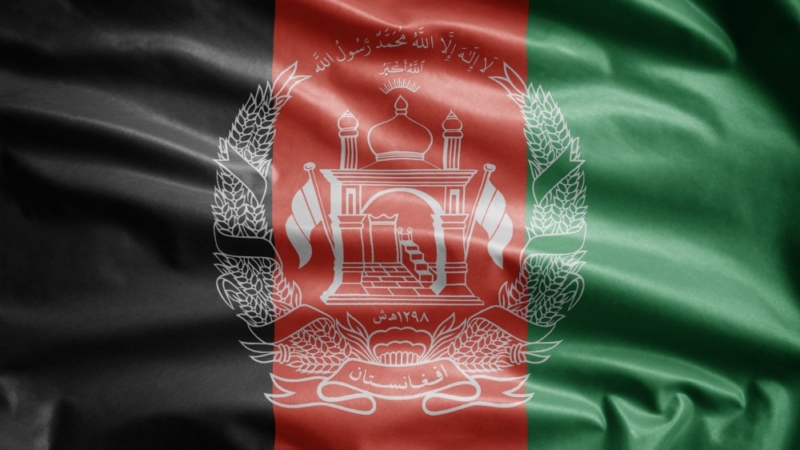This is a shorter version of a brief which was prepared for Pakistani Senate’s standing committee on Defence. Also published here. Full report here
Pakistan and Afghanistan are joined by geography and a complex history. A long and imaginary border drawn at the end of the colonial era runs through bonds of religion, culture, language and ethnicity. Thirty years of war, political upheaval and instability in Afghanistan have been shared by Pakistan in no small measure. Since independence in 1947, Pakistan has had an unstable bilateral relationship with its northwestern neighbour, stemming from border disputes. Afghanistan has always objected to the Durand Line as the official border and claims areas in Pakistan’s tribal areas and the Khyber-Pakhtunkhwa province as its own territory.
Despite the affinities and physical proximity, this has been a troubled relationship, worsened by British, Soviet and American ambitions.
Pakistani strategists – comprising mostly the security establishment – have always feared a hostile Afghan government since it would lead to the country’s encirclement. An unfriendly Afghan government on the western border, with traditional enemy India to the east, has been an overarching fear in conventional military estimates. The hostility towards India has therefore informed the way Pakistan views Afghanistan.
The Cold War, jihad and the Taliban
The Cold War has had the greatest impact on Pakistan-Afghanistan relations in recent decades. The Soviet invasion of Afghanistan in 1979 plunged the country into civil war, after which Pakistan, with the U.S. and Saudi Arabia, backed the Afghan ‘mujahideen’ resistance, which eventually ‘defeated’ the U.S.S.R. ten years later. What followed was abandonment by the international community, especially the West. During the 1990s, the rise of a predominantly Pashtun religious militia – the Taliban – facilitated by Pakistan complicated matters, pitting Pakistan against non-Pashtun Afghans as the Taliban carried out atrocities against other ethnic and religious groups in Afghanistan.
The Taliban captured Kabul in 1996 and ended up controlling around 90 percent of the country by 2001. Pakistan was their closest ally, and one of just three countries that recognized their regime. There is increasing evidence that Pakistan’s intelligence establishment aided Taliban’s consolidation of power in Afghanistan in the 90s.
The U.S.-led war on terror after the September 11, 2001 attacks transformed the Taliban – who were providing safe havens to al Qaeda – into the enemies of the United States. The Taliban’s main opponents, the Northern Alliance, became the obvious favourite of the West, and was provided a generous share of power after coalition forces toppled the Taliban regime.
Pakistan had officially urged the Taliban to surrender al Qaeda and their leader, Osama bin Laden, to the U.S., but the Taliban leader Mullah Mohammed Omar refused, and vowed to defend his ‘guests’. After Kabul fell on November 13, 2001, the Taliban went into hiding.
As the U.S.-led NATO forces declared victory and started their disastrous state-building project, the Taliban movement re-emerged in mid-2000s, starting an insurgency against coalition and Afghan forces.
The Taliban resurgence
By 2009, the resurgent Taliban had become a potent force. Neither the U.S.-led International Security Assistance Force (ISAF), nor the Afghan security apparatus, seemed capable of stopping the Taliban attacks. The blame for NATO’s failure in establishing a viable state and a security force that could effectively deal with the Taliban was put on Pakistan. Fingers were pointed at safe havens in Pakistan’s semi-autonomous tribal areas along the border with Afghanistan, where the Taliban are alleged to regroup and attack.
The international community also claims that elements in the Pakistani state, particularly its military and intelligence community, continue to provide active support to the Taliban. This allegation has been vehemently denied by Pakistan at all levels since – even according to objective assessments by the U.N. and many research organizations – most of Afghanistan is still not under the complete control of ISAF or the Karzai government. Afghans live in constant fear of Taliban attacks. Suicide bombings as well as spectacular raids against high-profile targets have become increasingly frequent.
Despite the growing trust deficit between the ‘allies’ in the War on Terror, the U.S., Pakistan and Afghanistan realise the threat posed by al Qaeda, the Taliban and affiliated groups to stability in the region as well as across the globe.
The war in Afghanistan has spilled over into Pakistan as well, and a Pakistani Taliban militant group (the Tehrik-e-Taliban Pakistan, or TTP) has emerged, waging war against Pakistan’s state and people. The TTP, hunted by the Pakistan military, has found safe havens in Afghanistan. Mullah Fazlullah, leader of the group’s Swat faction, and his supporters have found refuge in Afghanistan’s Kunar and Nuristan provinces.
The threat is not only military in nature. While the Taliban in Afghanistan and Pakitsan directly threaten the state, their ideology and ruthless imposition of the Takfiri interpretation of Islamic laws threatens citizens as well. The Taliban are averse to democracy and to many tenets of modern society, and refuse to negotiate with the international community until they are assured of future power.
The 2014 withdrawal
The Taliban problem is compounded by the impending withdrawal of most coalition forces in 2014, which will lead to myriad challenges for Afghanistan, Pakistan, South Asia, and the international community. Political stability in Afghanistan can only be ensured by an inclusive and broad-based reconciliation process, which must be supported and owned by the Afghan people. Regional peace, economic growth and interdependence in South and Central Asia require harmony and stability between various factions inside Afghanistan.
Sustainable Afghan reconciliation would be incomplete without the reintegration of Taliban militants, as well as other groups who are fighting ‘foreign invaders’ regardless of their affinity to the Taliban or their religious beliefs. The current efforts by the Afghan government for reintegration of militant cadres must be expanded to include leaders and ideologues of the Taliban movement as well, otherwise the reconciliation process will suffer.
Peace: which way?
As international forces prepare for withdrawal in 2014, Afghanistan and its South Asian neighbours are deeply concerned about political stability and internal security in the landlocked country, which continues to deteriorate and is also affecting the region. Without completely eliminating terrorist safe havens in the Pakistan-Afghanistan border areas, regional peace and stability will remain a pipe-dream. The rugged terrain of the area also makes it difficult for conventional military forces – even with state-of-the-art technology like drones – to definitively eliminate militants that have operated in the region for decades.
Cross-border attacks take place in both countries, and while Afghanistan and Pakistan should concentrate on eliminating militant safe havens within their territories, they continue to blame each other for harbouring militants. This leads to a trust deficit that must be addressed at the state-to-state as well as the people-to-people level. When it is not, and allies in the War on Terror blame each other for faults and shortcomings, the partnership between terrorist elements appears stronger to people than the states that are battling them. The international effort against terror must not be less effective than the transnational jihad in South Asia and beyond.
Without coherence and coordination in the activities as well as policies of the allies in the War on Terror, the people of these countries are falling prey to extremist narratives. Drone attacks are seen as an infringement of Pakistan’s sovereignty rather than a potent tool against militants. Pakistan’s internal narratives are becoming radicalized and espouse more anger and revulsion for the West, in a way aiding the extremists.
Pakistan’s strong and empowered Pashtun constituency is an asset and policy driver when it comes to the country’s Afghanistan policy. Pakistan has hosted millions of Afghan refugees, a large number of them Pashtuns, who have fled fighting in their homeland.
A peaceful and independent Afghanistan that has friendly relations with all countries in the international community is a policy goal that the Pakistani government should pursue. However, it has not been able to do so in a coherent manner so far. The causes for this may be traced to truncated dialogue between regional actors as well as limited engagement with the Afghan intelligentsia and civil society.
In addressing the root causes of mistrust and suspicion between Afghanistan and Pakistan, the issue of tribal citizens on both sides of the border – their safety and security, their pursuit of livelihood, and self-governance – must also be discussed in a coherent manner. Narratives of isolation and extremism must be countered with tolerance, peace and pluralism. Support for an Afghan-owned reconciliation process by all regional actors and entities is of paramount importance, and this must be done without any interference in the internal and sovereign matters of Afghanistan.
There are strong indications that Pakistan is making an effort to engage not only the Afghan government, but all major ethic and religious groups in Afghanistan. The attempt is to dispel the impression in many Afghan circles that Pakistan is interested in only backing the Pashtuns of the country at the expense of others. Recent high-level visits by Pakistani officials have involved meetings with non-Pashtun politicians and leaders of Afghanistan as well. Further, the recent confidence-building measure of releasing Taliban prisoners from Pakistani prisons after the visit of the Afghan High Peace Council has improved the conversation. Afghan officials have welcomed the move and have stressed the need for more such efforts.
Regional cooperation
In order to play its role in supporting the security transition process in 2014 and to ensure Afghan peace and stability beyond 2014, Pakistan may seek strategic realignment under the ambit of the Shanghai Cooperation Organisation (SCO) with the involvement of regional powers such as Russia and China. Pakistan may also initiate bilateral and multilateral parleys with India, Iran and Central Asian states, with the specific objective of promoting peace and stability in Afghanistan and ensuring that the landlocked Central Asian state does not become the stage for any future proxy war. The opportunity for India and Pakistan to jointly train Afghan security forces in 2014 and beyond still exists, and needs to be studied closely and comprehensively by the security establishments of the three countries.
To the northwest and east of Pakistan are fast growing, ‘skills- and savings-rich’ economies of China and India. In the north and the west, there are resource-rich Central Asian countries, Iran and the Persian Gulf states. Ensuring peace and stability in Afghanistan, and improving the security situation in Pakistan, will lead to the reopening of the historical East-West-North trade routes, and transform Pakistan into a regional trading hub. If that happens, lower costs of transport and labour will lead to the development of industrial zones for sustained economic growth not only for the country, but for all economies in the region.
Peace and security are therefore not only prerequisites for development and economic growth, but in turn, human development and economic stabilization will lead to a state of interdependence in South and Central Asia where all states in the region will be stakeholders in perpetuating peace and stability in their respective countries as well as in the region.
Pakistan will have to focus on three sets of bilateral trust building: with the US, Afghanistan and India. This is a complicated endeavour but there is no alternative to sustained diplomatic engagement. A settlement in Afghanistan would require an honest broker between all actors whose interests are not compatible and may lead to another uncertain phase for a country that has suffered three decades of war. It would be important for India to recognize that instability in Afghanistan will have spill over immediately into Pakistan. How can India insulate itself from this?
A regional approach to peace building therefore is required before and after 2014. A fine balance of competing interests and a set of workable compacts are required in the region. This is a formidable challenge which is not insurmountable.



